〈Working On the Water〉 Ippon-yari Squid from Ashiya
Catching Ipponyari at Dawn
It’s 3:00 a.m. The No. 5 Komatsu Maru fishing boat leaves Ashiya Port in the dark, headed out to the Hibiki Sea. Its destination is a fishing ground about 20 kilometers out to sea. The hunt is for swordtip squid, sea creatures that are active around dawn, and the fishing is done with free-floating longline gear called taru-nagashi. We follow experienced fisherman Makoto Nakanishi to see how he does it.
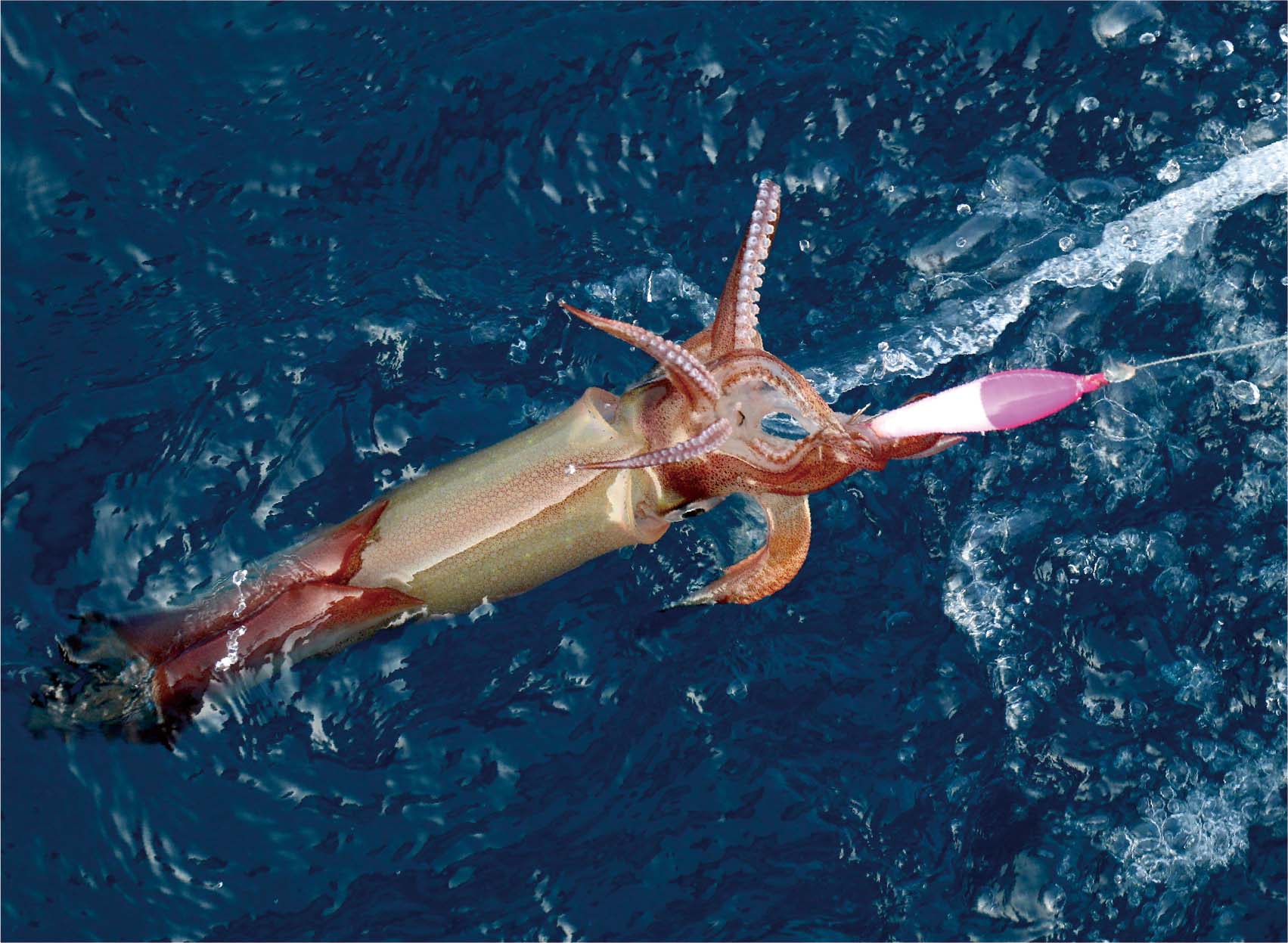
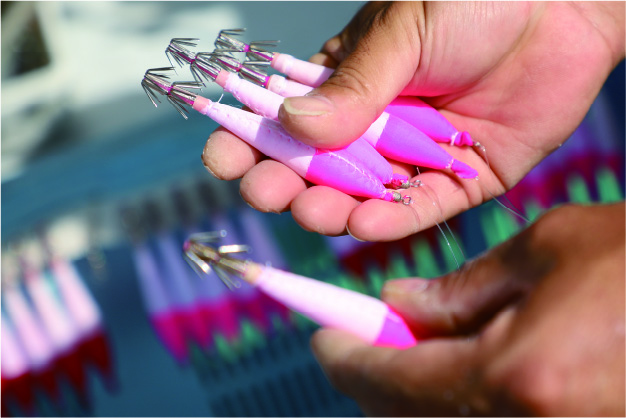
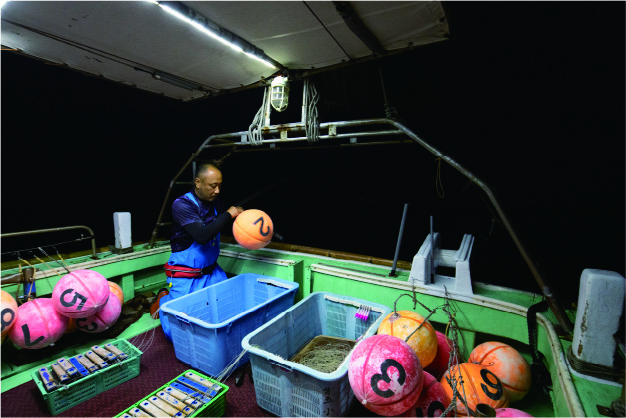
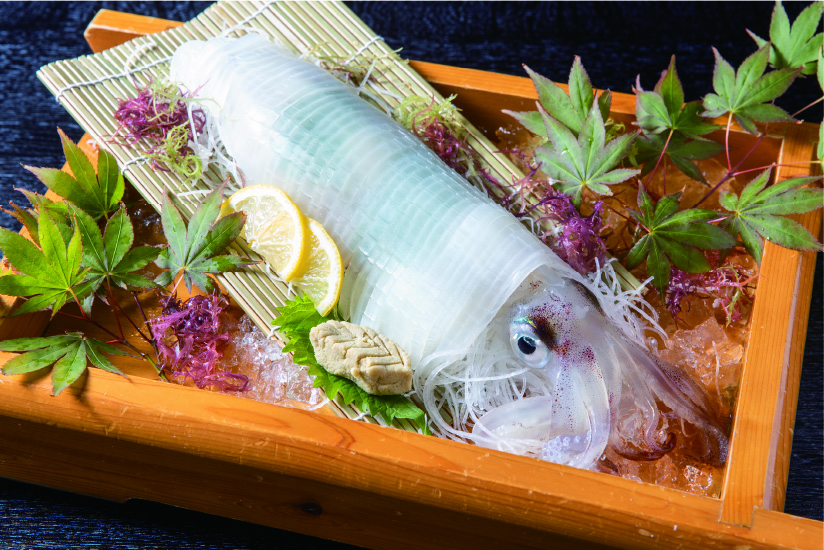
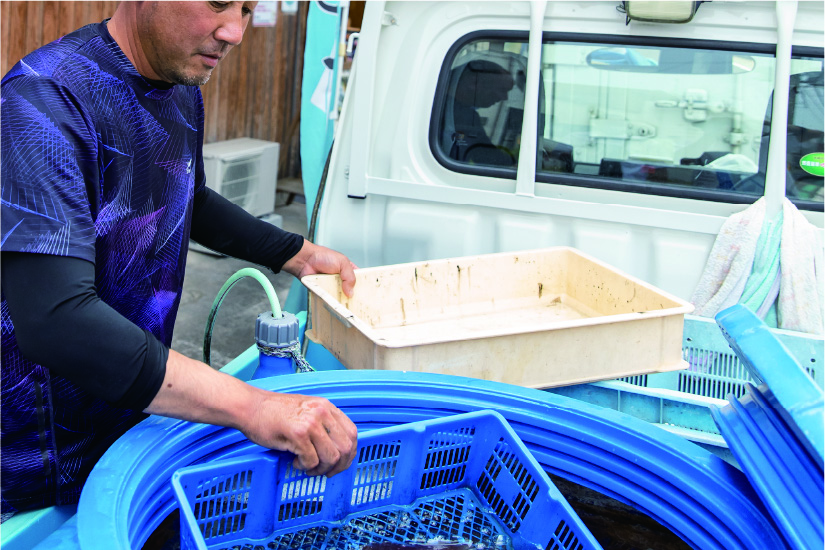
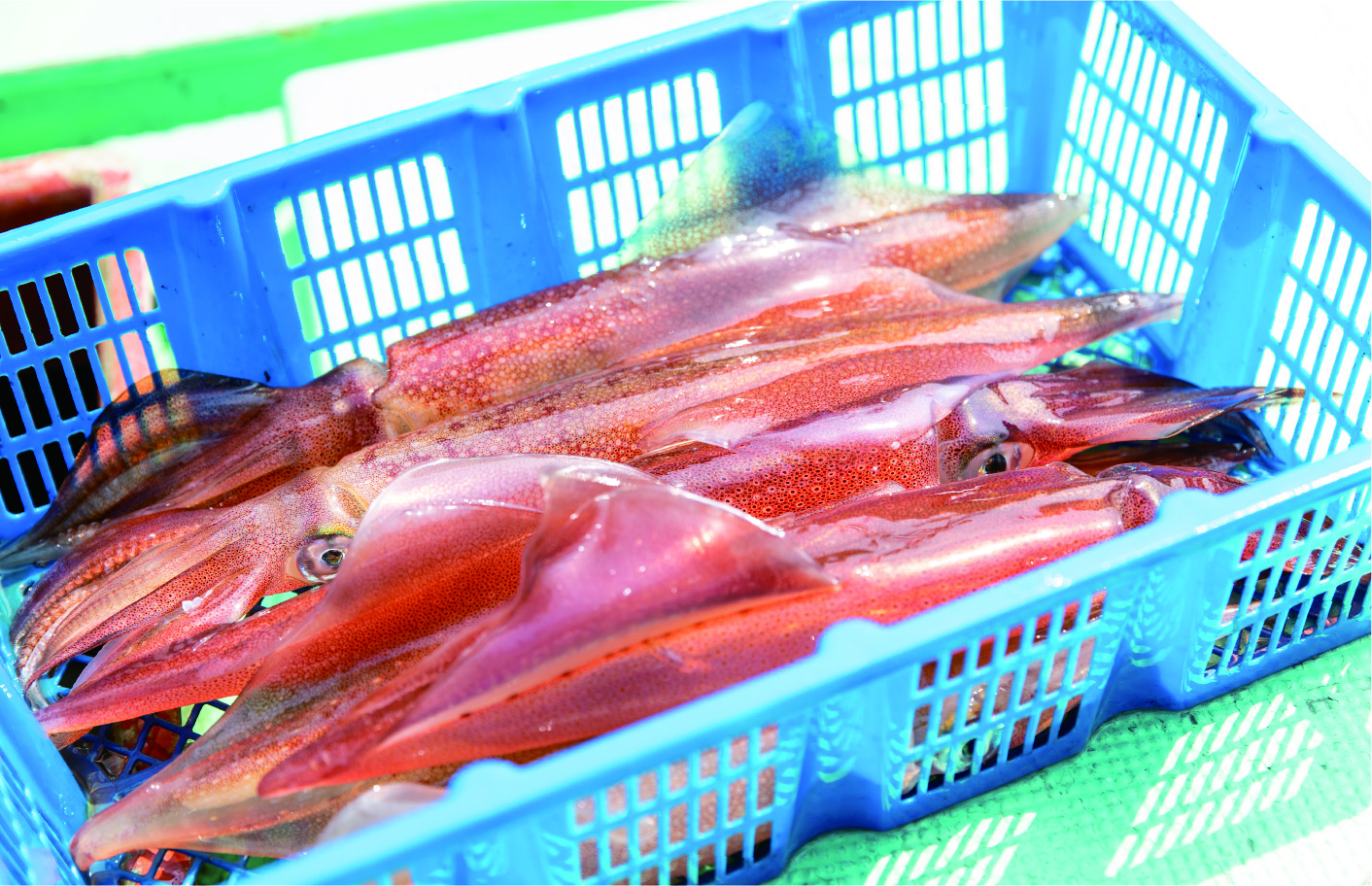

The trip takes about one hour from Ashiya Port. When the depth gauge reads about 60 meters, the boat slows down. In the daytime, the Shirashima Oil Storage Terminal (Kitakyushu) would be visible to the southeast. But the sun won’t be up for another hour. Today’s fishing will start here.
Nakanishi drops the twenty floats into the dark sea in numerical order, one after another. Attached to each one is a line with pink-colored artificial lures known as sutte. The floats are spaced out evenly. Each has a trunk rope from which five branch lines extend with the lures. The squid think the jig is a small fish and wrap their arms around it.
After all of the floats are dropped, the boat returns to the first float, and it is pulled into the boat, along with the squid caught on the line below. Each float is hauled in by number as the sun rises. The squid are quickly shaken off the lures and into the seawater tank without touching them, as the heat from a human hand would weaken them instantly.
The numbered floats are allowed to float on the current as it gradually flows to the northeast. The jigs also float freely and will be affected by the wind direction, tide, and sea current, attracting squid as if they were fish fry. Often the sea current may be turbulent or headwinds are encountered, so Nakanishi takes careful notes and refers to those written over time to document his catches. Perhaps the wind was not blowing in the best direction today, because he didn’t catch anything at first. Only after some time did he start to catch the class of squid that qualify as ipponyari—40 cm (almost 16 inches) in length or more.
After returning to port, the first task was to scoop the squid out of the boat’s tank using plastic strainer baskets. Several of these lively creatures would be selected and transferred to a tank in a light truck, then delivered to a local sushi restaurant just a few minutes away. To be able to feast on squid that was swimming in the sea off of Ashiya the same morning is the very definition of luxury. Live sashimi made with ipponyari shines like a jewel from the sea.




